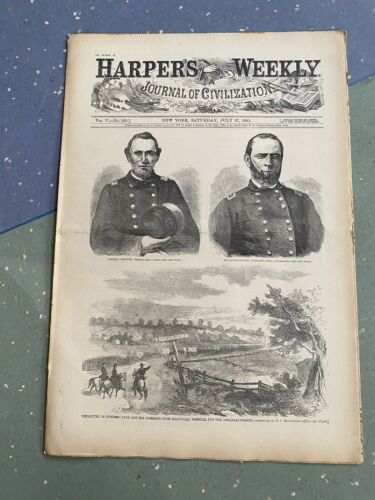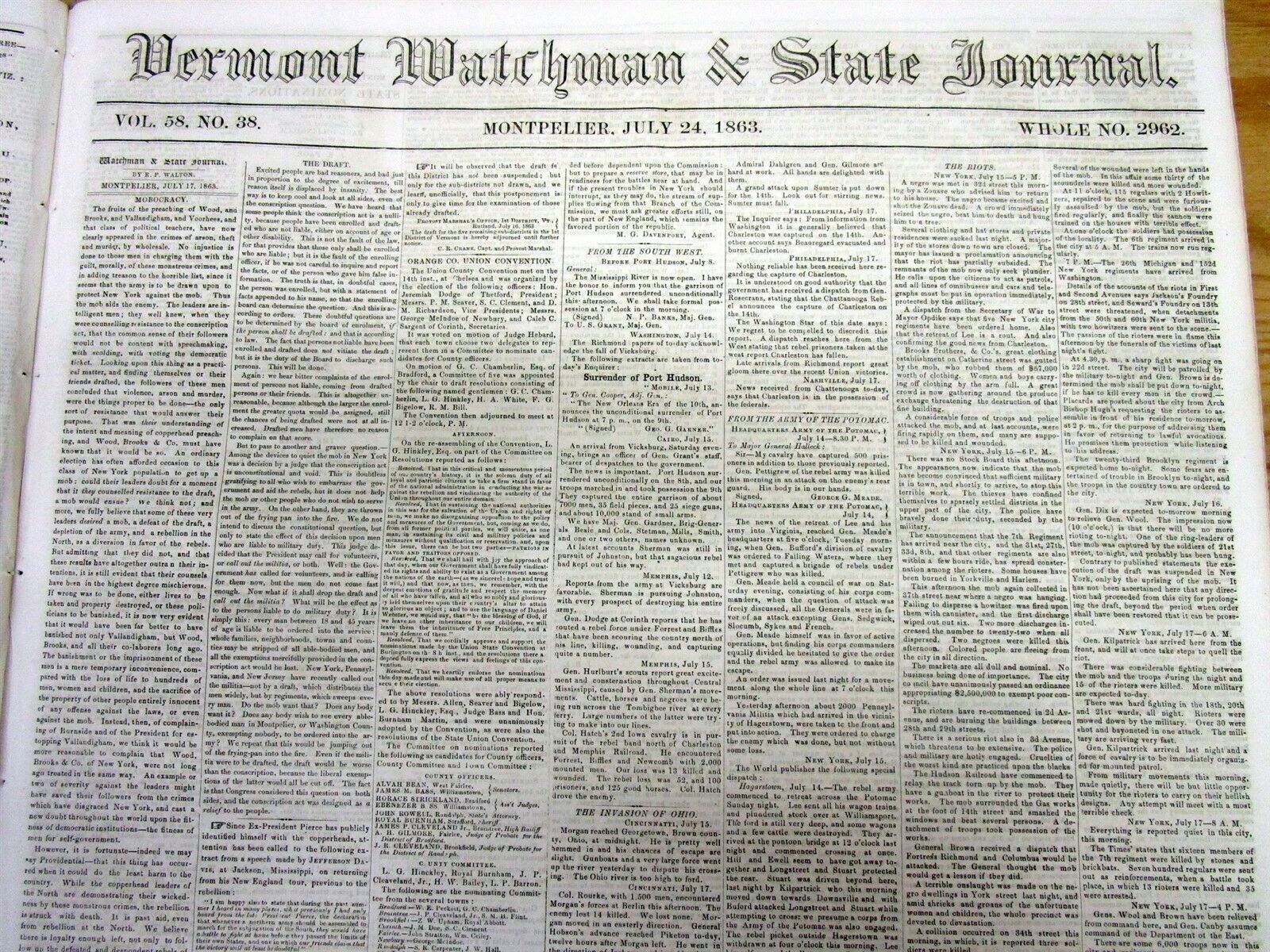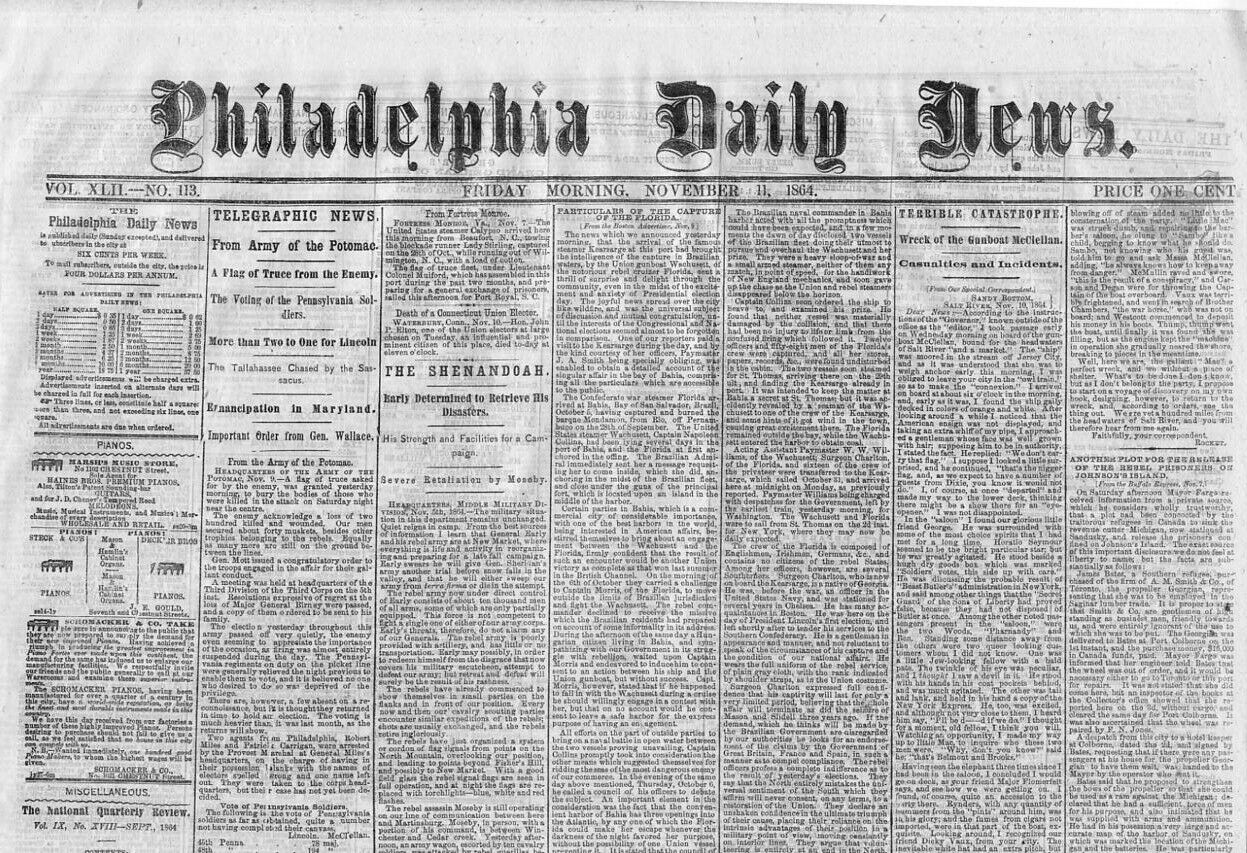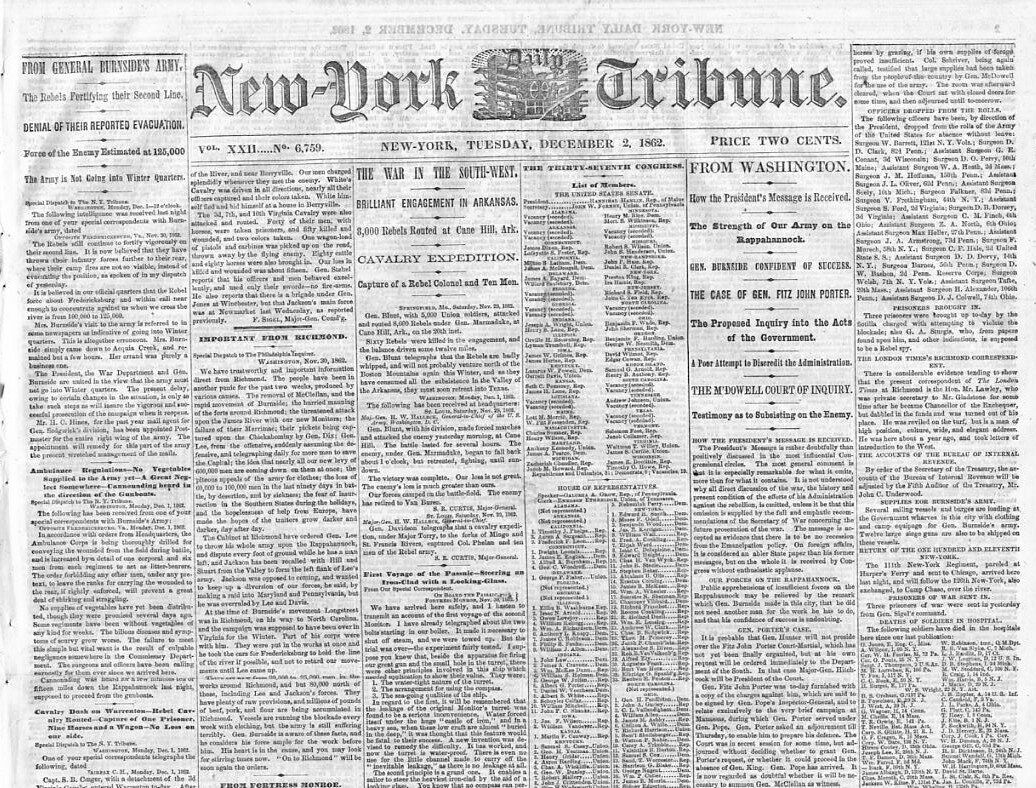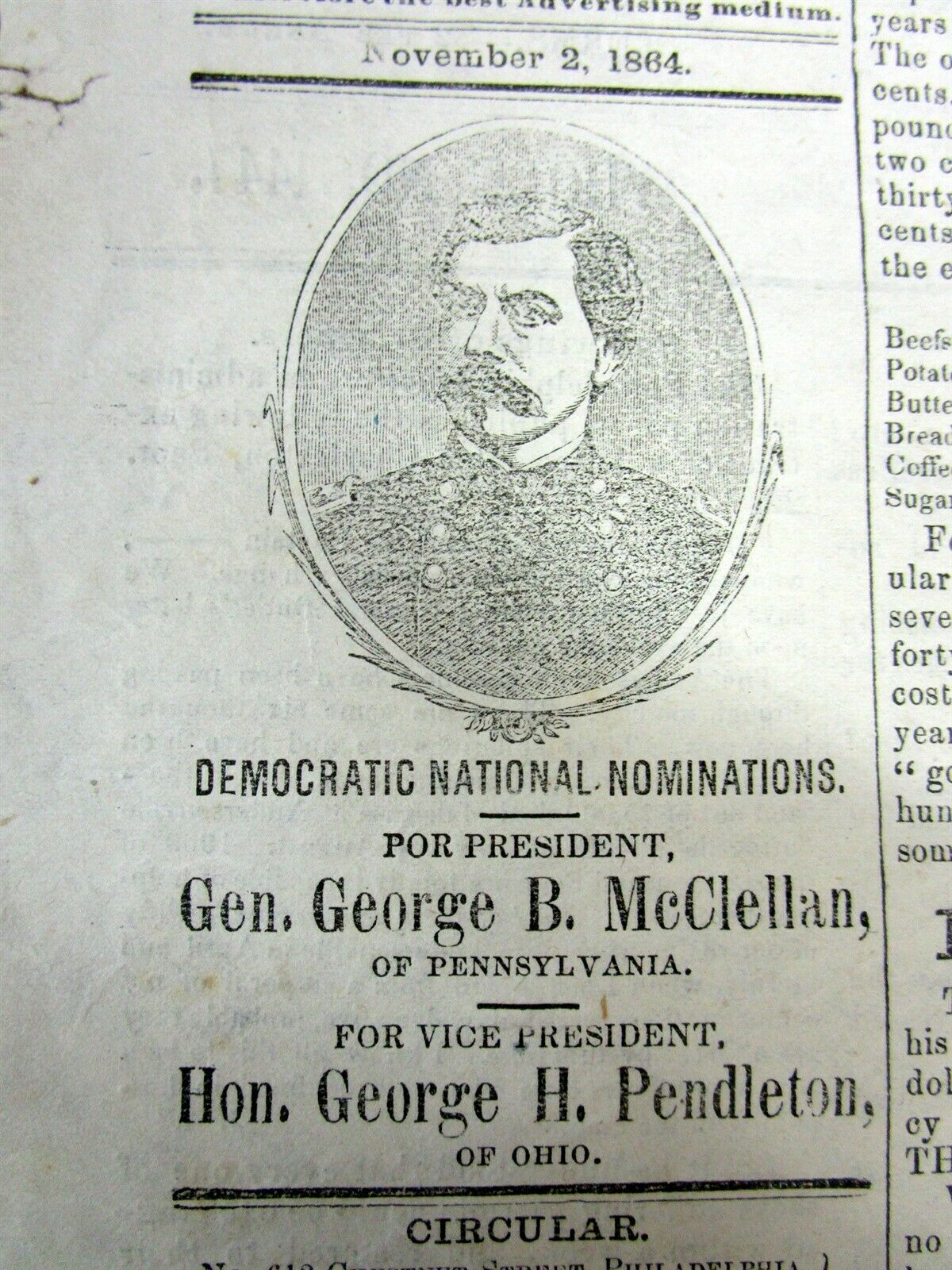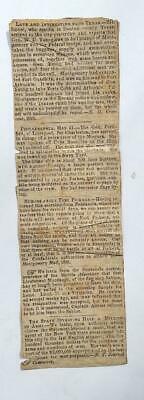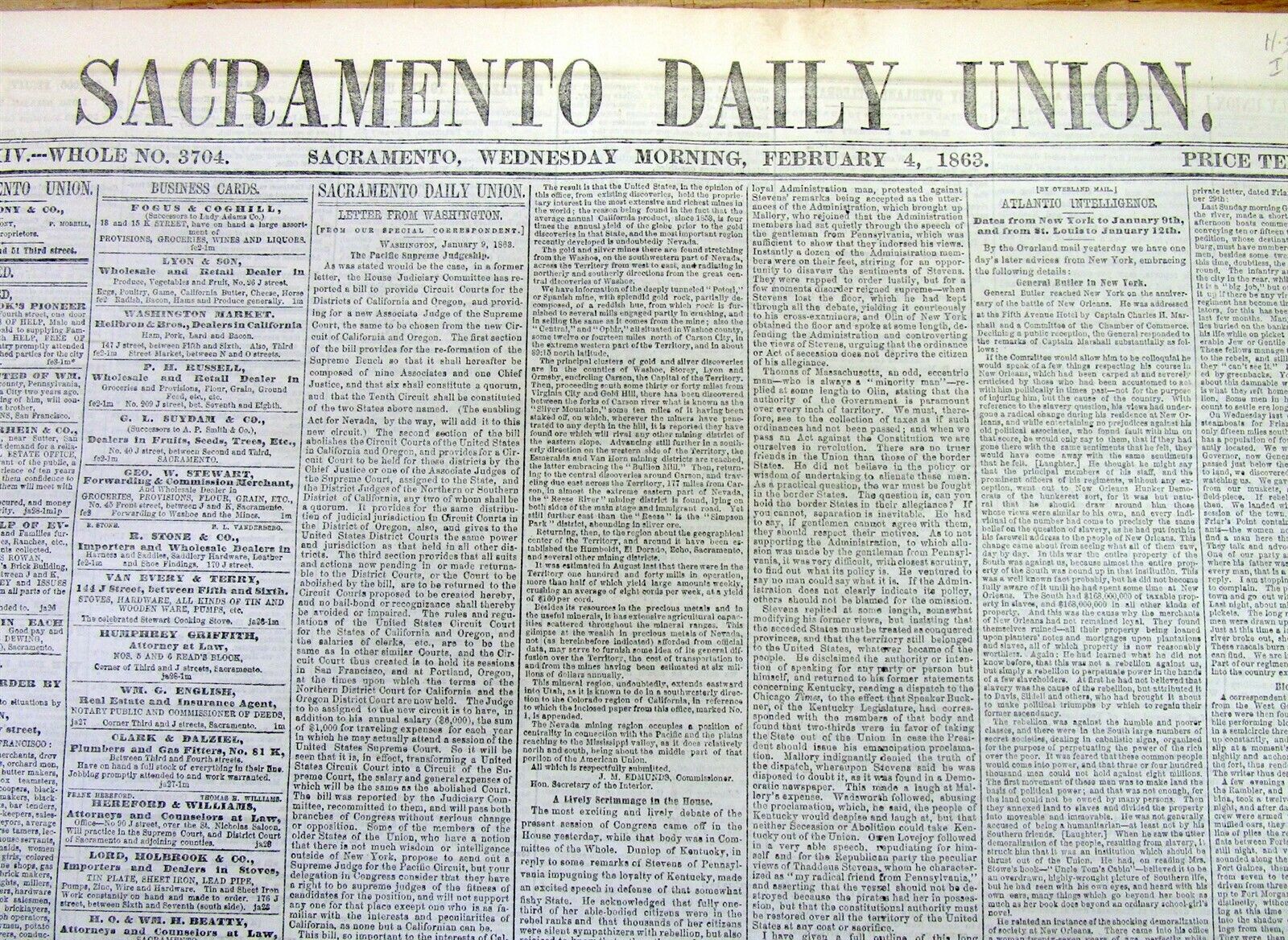-40%
1862 Civil War UNION OCCUPATION newspaper NEW SOUTH Port Royal SOUTH CAROLINA
$ 44.88
- Description
- Size Guide
Description
1862 Civil War UNION OCCUPATION newspaper NEW SOUTH Port Royal SOUTH CAROLINARare 1862 Civil War UNION OCCUPATION newspaper
THE NEW SOUTH
Port Royal SOUTH CAROLINA
- inv # 7S-225
Please visit our
EBAY STORE
for THOUSANDS MORE HISTORICAL NEWSPAPERS for SALE or at auction
SEE PHOTO(s) - COMPLETE ORIGINAL rare Civil War UNION OCCUPATION NEWSPAPER, the
New South
(Port Royal, SOUTH CAROLINA) dated Oct 25, 1862. This rare original UNION OCCUPATION newspaper contains much Civil War news including very long detailed coverage of the
POCOTALIGO EXPEDITION
by the Union military forces.
This also has a report of the
captured Confederate steamboat, the
PLANTER
, which was piloted to Union lines by an African-American slave named
Very rare UNION OCCUPATION NEWSPAPER published at PORT ROYAL, South Carolina.
USS Planter (1862) was a steamer taken over by Robert Smalls, a Southern slave and ship's pilot who steered the ship past Confederate defenses and surrendered it to Union Navy forces on 13 May 1862 during the American Civil War. The episode is missing from Scharf's History of the Confederate States Navy, except for one sentence saying that Smalls "stole" the ship.
For a short period, Planter served as a gunboat for the Union Navy. As the ship burned wood, which was scarce where the Navy was operating, the Navy turned the ship over to the Union Army for use at Fort Pulaski on the Georgia coast. In 1863 Smalls was appointed captain of Planter, the first black man to command a United States ship, and served in that position until 1866.
The Second Battle of Pocotaligo, or Battle of Pocotaligo Bridge, or Battle of Yemassee, often referred to as simply the Battle of Pocotaligo, was a battle in the American Civil War on October 22, 1862 near Yemassee, South Carolina. The Union objective was to sever the Charleston and Savannah Railroad and thus isolate Charleston, South Carolina.
On October 21, 1862, a 4200-man Union force, under the command of Brigadier General John M. Brannan, embarked on troop transport ships and left from Hilton Head, South Carolina. Brannan's orders were "to destroy the railroad and railroad bridges on the Charleston and Savannah line." Under protection of a Naval Squadron, they steamed up the Broad River, and disembarked the next morning at Mackey Point (between the Pocotaligo and Coosawhatchie Rivers), less than ten miles from the railroad.The 47th and 55th Pennsylvania Infantry Regiments, under Colonel Tilghman H. Good's command, began the march toward Pocotaligo. A smaller detachment of 300 men – two companies of engineers and the 48th New York regiment was ordered up the Coosawhatchie River to destroy the bridge at Coosawhatchie and then tear up the rails as they advanced on Pocotaligo.
Colonel William S. Walker, the Confederate commander responsible for defending the railroad, called for reinforcement from Savannah and Charleston. He deployed his available forces to counter the two Union advances, sending 200 of his men to guard the bridges, and dispatching the Beaufort Volunteer Artillery (CS), along with two companies of cavalry and some sharpshooters in support, to meet the main Union advance on the Mackey Point road. The Confederates encountered Brannan's Division near the abandoned Caston's Plantation and the artillery opened fire with their two howitzers. The Confederates retreated when the Union artillery responded.
With Brannan in pursuit, Walker's men slowly withdrew, falling back to their defensive fieldworks at Pocotaligo. The Union troops encountered the Confederates on the opposite side of a muddy marsh, and their advance stalled. Brigadier General Alfred Terry, in command of the Second Brigade, ordered the nearly 100 Sharps rifleman of the 7th Connecticut Infantry forward to the edge of the woods where the Union forces had taken cover. The rapid fire of the repeating rifles quickly suppressed the fire from the Confederate battery and associated infantry across the marsh, and they were soon ordered to cease firing to preserve ammunition. The opposing forces blazed away with cannon and musket fire at intervals for more than two hours, until Confederate reinforcements arrived. By then it was late in the day, and the Union troops were running low on ammunition.
Very good condition. This listing includes the complete entire original newspaper, NOT just a clipping or a page of it. STEPHEN A. GOLDMAN HISTORICAL NEWSPAPERS stands behind all of the items that we sell with a no questions asked, money back guarantee. Every item we sell is an original newspaper printed on the date indicated at the beginning of its description. U.S. buyers pay priority mail postage which includes waterproof plastic and a heavy cardboard flat to protect the purchased item from damage in the mail. Upon request by the buyer, we can ship by USPS Media Mail to reduce postage cost; however, please be aware that USPS Media Mail can be very slow in its time of transit to the buyer. International postage is quoted when we are informed as to where the package is to be sent. We do combine postage (to reduce postage costs) for multiple purchases sent in the same package.
We list thousands of rare newspapers with dates from 1570 through 2004 on Ebay each week. This is truly SIX CENTURIES OF HISTORY that YOU CAN OWN!
Stephen A. Goldman Historical Newspapers has been in the business of buying and selling historical newspapers for over 50 years. Dr. Goldman is a consultant to the Freedom Forum Newseum and a member of the American Antiquarian Society. You can buy with confidence from us, knowing that we stand behind all of our historical items with a 100% money back guarantee. Let our 50+ years of experience work for YOU ! We have hundreds of thousands of historical newspapers (and their very early precursors) for sale.
Stephen A. Goldman Historical Newspapers
has been in the business of buying and selling historical newspapers for over 50 years. We are located in the charming Maryland Eastern Shore town of OXFORD, Maryland.
Dr. Goldman is a consultant to the Freedom Forum Newseum and a member of the American Antiquarian Society. You can buy with confidence from us, knowing that we stand behind all of our historical items with a 100% money back guarantee. Let our 50+ years of experience work for YOU ! We have hundreds of thousands of historical newspapers (and their very early precursors) for sale.
We invite customer requests for historical newspapers that are not yet located in our extensive Ebay listing of items. With an inventory of nearly a million historical newspapers (and their early precursors) we are likely have just the one
YOU
are searching for.
WE ARE ALSO ACTIVE BUYERS OF HISTORICAL NEWSPAPERS, including large and small personal collections, bound volumes, significant individual issues, or deaccessions from libraries and historical societies. IF YOU WANT TO SELL, WE WANT TO BUY !!!
Powered by SixBit's eCommerce Solution




